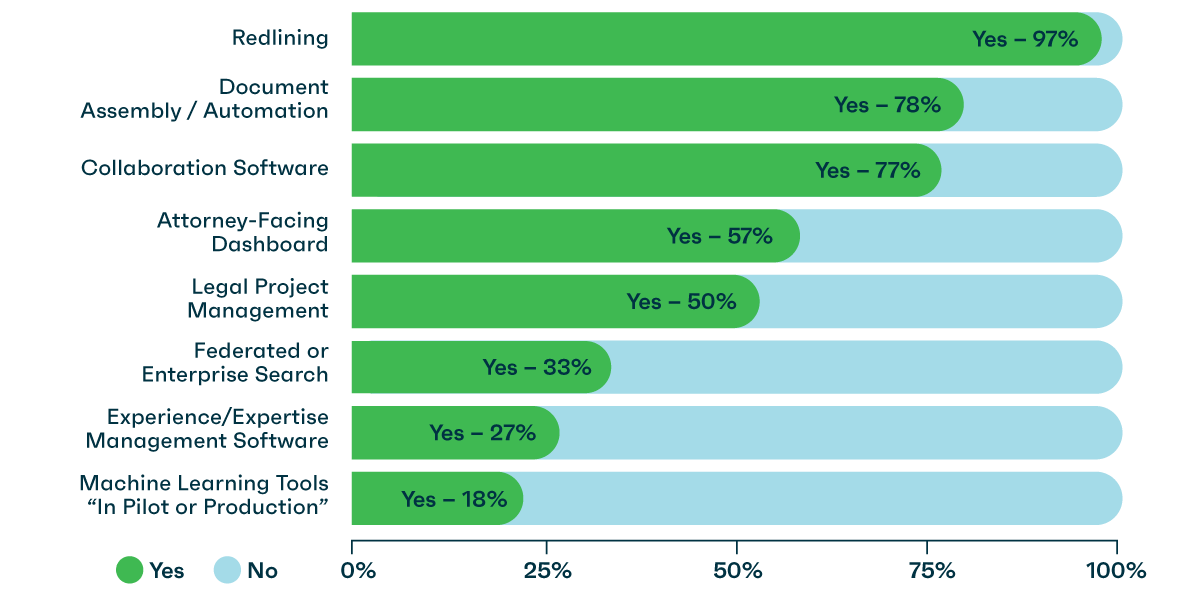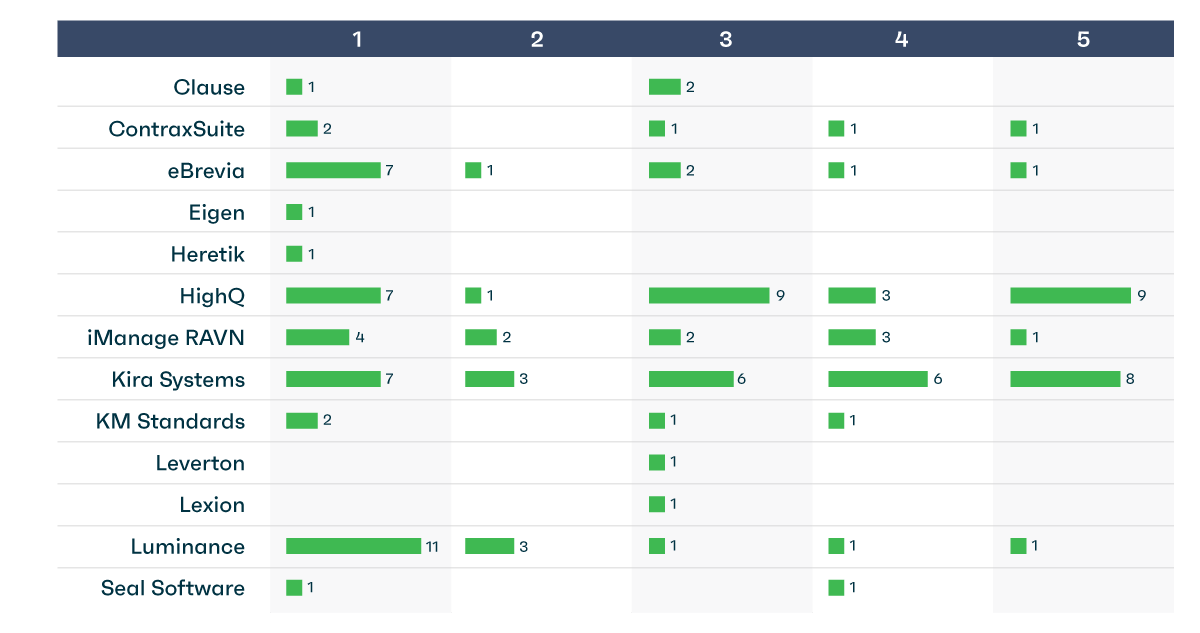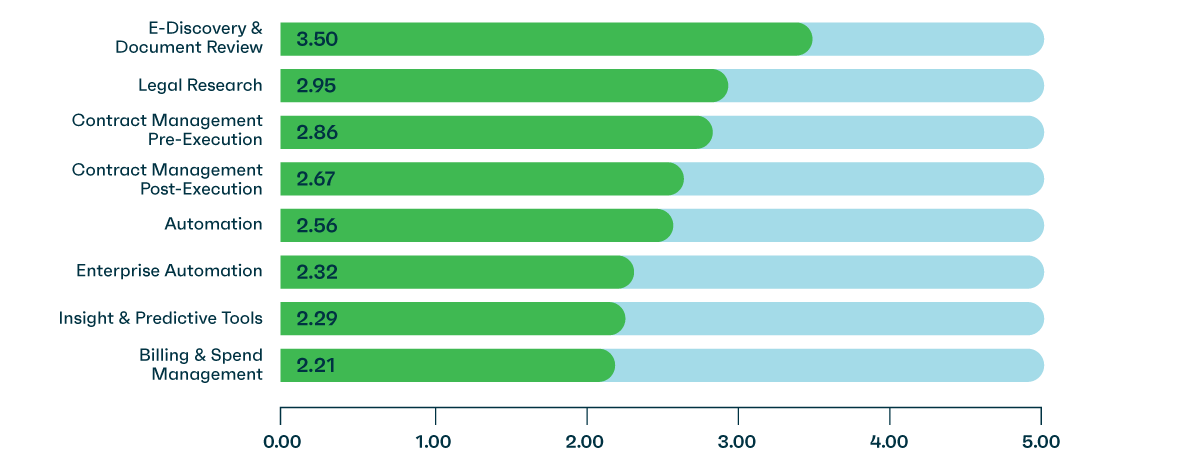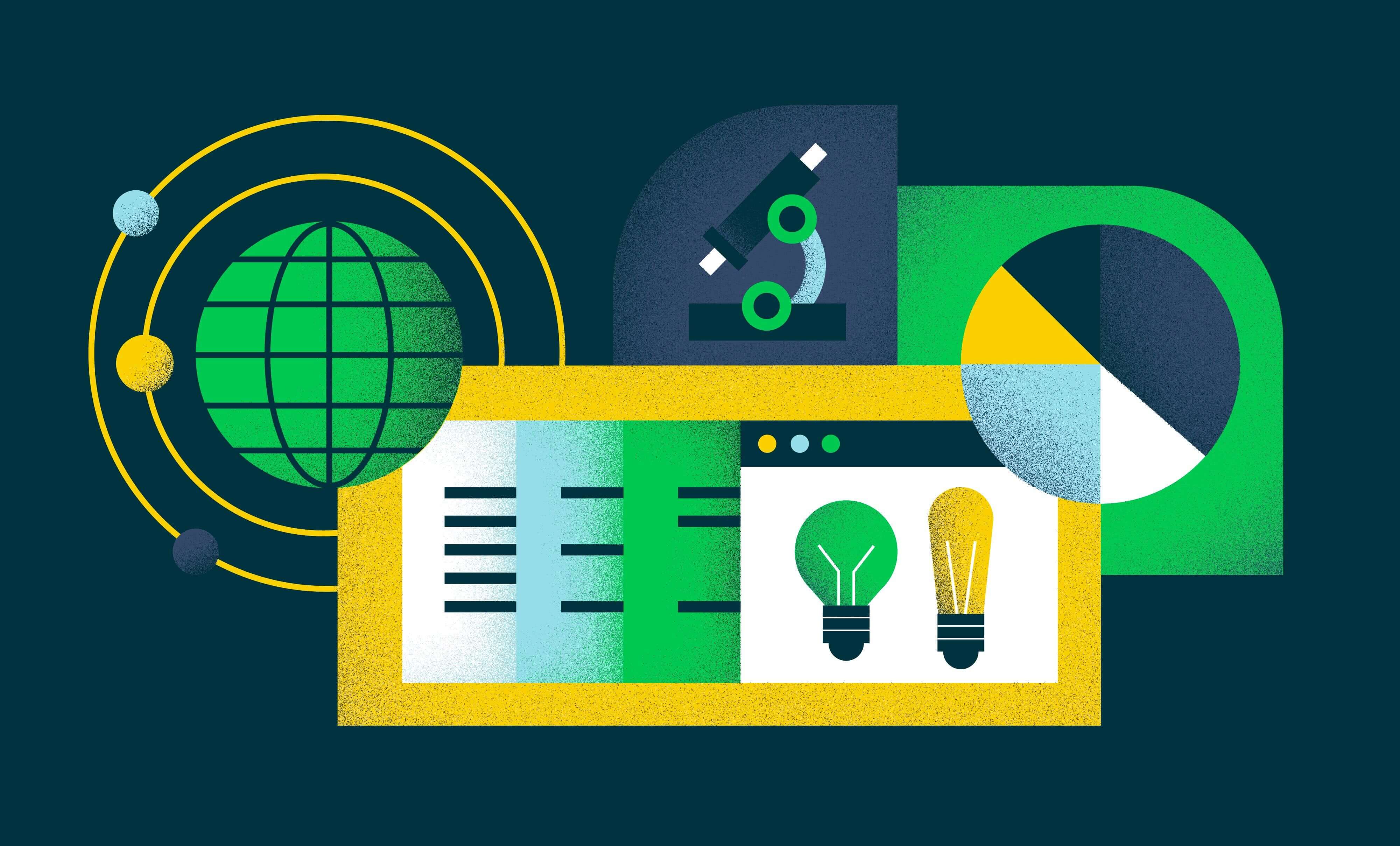How far along is the legal industry in adopting artificial intelligence-based technologies and solutions? New research from ILTA and the Blickstein Group provides a more nuanced picture than many previously-reported studies. This research shows that adoption of AI is uneven at best, but that many types of solutions are starting to be incorporated into day-to-day work in the industry.
Measuring Legal Tech Adoption
For context, let’s start with overall adoption of legal tech, whether or not it’s AI-based. The annual Technology Survey published by ILTA, the International Legal Technology Association, gives a good barometer of the adoption of various types of technologies. The following table shows the relative number of respondents who were able to identify solutions they have adopted in each category.
Machine learning is relatively low in this adoption table, even though respondents who are merely piloting machine solutions are included in this question. This data tells very little about machine learning adoption, however, because it doesn’t get into any detail about how ML is being used.
Adoption of Practice-Related Technology: Percentage of Respondents Using Specific Types of Technology

Source: ILTA 2020 Tech Survey
Enter Blickstein Group. Brad Blickstein’s consulting and research company had observed that most of the existing technology surveys in the industry failed to distinguish between researching, experimenting with, piloting, and adopting AI-based technologies, so it was hard to get a true handle on how widespread adoption was progressing. Moreover, they often fail to distinguish between the many different types of applications for AI. Are legal organizations actively and regularly leveraging AI in their work? And for what purposes? And is the industry still dabbling in experimentation and research, or are AI-based solutions getting real traction and making an impact on the organizations using them?
Blickstein first developed the Legal AI Efficacy Report, which attempted to provide an understanding of what all those AI solutions actually do. Through interviews with users and other means, Blickstein was able to document a wide variety of use cases for AI and machine learning-based solutions in the industry.
The Legal AI Efficacy report documented the many ways that AI can be leveraged in legal. It begged the question, however, of how widespread the use of AI is in the legal industry, and how deeply it is rooting itself in the fabric of industry workflows. Blickstein wanted to move beyond one vague question (“are you using AI?”) to a much more interesting and specific one, “What AI are you using, and how much?”
Focusing on Degrees of Adoption
That latter question is the focus of a more recent survey and white paper that Blickstein and ILTA have published. Blickstein identified a list of commercially available AI-based legal tech solutions in eight relatively well-defined categories. Where survey respondents identified AI-based tools they are using, he asked them to rate their engagement with the products, from 1 point for “just a proof of concept,” to 5 points for “integral to our daily operations.”
In the aggregate, the responses by category are perhaps not too surprising. The categories of AI-based tools that have been around the longest, such as eDiscovery and Legal Research, received the highest scores on Blickstein’s 5-point scale, indicating that those tools are well on their way to widespread adoption.
Adoption of Classes of AI-Based Legal Technologies
Scale: (Self-evaluated) 1 = “just a proof of concept” 5= “integral to our daily operations”
Source: Legal AI Tools Usage Survey, Blickstein Group/ILTA, September 2020
Contract management tools occupy a sort of middle ground, with pre-signature and post-signature contract management solutions at 2.86 and 2.67 on the scale, respectively. Other types of automation tools, insight and predictive tools, and billing and spend management tools make up the less-adopted end of the spectrum.
Looking inside each category, however, tells a much more fragmented story. In most categories there are significant differences in the number of specific commercial solutions that respondents described as integral to their operations, vs. those that are in a proof of concept stage of evaluation. Here, for example, are the responses in the category of Contract Management, Post-Execution:
Adoption of Contract Mgmt (Post-Execution) Technologies
Scale: (Self-evaluated) 1 = “just a proof of concept” 5 = “integral to our daily operations”

Source: Legal AI Tools Usage Survey, Blickstein Group/ILTA, September 2020
This slice of the data shows that individual technology offerings, even where adopted by multiple customers, can vary quite a bit in the extent to which they have made themselves “integral to daily operations.” Charts for the other segments in the report also show a similarly wide distribution of responses.
In a note in the report Blickstein comments that the research was carried out only among ILTA members, and that the total number of 143 responses, while a good representative sample, was not a statistically significant number on which to build firm conclusions - but it’s likely the best set that tries to answer some fundamental questions about AI adoption patterns in the legal industry.
The value of this research, in the end, is its reminder that, while AI-based technologies are in place across a wide range of workflows and applications, and are moving toward mainstream adoption in some segments, their uptake is very much uneven and their full integration has not yet been realized in many organizations.




